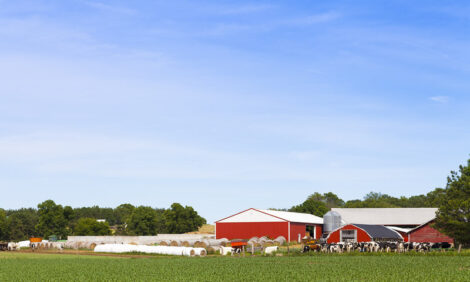



Foot and Mouth Vaccination Control Strategies
US - Simulation models have beene developed to assess the impact of livestock herd types and vaccination on foot and mouth disease (FMD) outbreaks using the North American Animal Disease Spread Model.The central United States has a large livestock population including cattle, swine, sheep and goats.
In this study, potential FMD virus outbreaks in the central region of the US were simulated to compare different vaccination strategies to a depopulation only scenario.
Based on data from the US Department of Agriculture National Agricultural Statistics Service, a simulated population of 151,620 livestock operations characterised by latitude and longitude, production type, and herd size was generated.
For the simulations, a single 17,000 head feedlot was selected as the initial latently infected herd in an otherwise susceptible population. Direct and indirect contact rates between herds were based on survey data of livestock producers in Kansas and Colorado.
Control methods included ring vaccination around infected herds. Feedlots ≥3000 head were either the only production type that was vaccinated or were assigned the highest vaccination priority.
Simulated vaccination scenarios included low and high vaccine capacity, vaccination zones of 10km or 50km around detected infected premises, and vaccination trigger of 10 or 100 detected infected herds.
Probability of transmission following indirect contact, movement controls and contact rate parameters were considered uncertain and so were the subjects of sensitivity analysis.
All vaccination scenarios decreased number of herds depopulated but not all decreased outbreak duration.
Increased size of the vaccination zone during an outbreak decreased the length of the outbreak and number of herds destroyed. Increased size of the vaccination zone primarily resulted in vaccinating feedlots ≥3000 head across a larger area.
Increasing the vaccination capacity had a smaller impact on the outbreak and may not be feasible if vaccine production and delivery is limited.
The ability to vaccinate all the production types surrounding an infected herd did not appear as beneficial as priority vaccination of feedlot production types that have high numbers of indirect contacts.
Outbreak duration, number of herds depopulated and the effectiveness of vaccination were sensitive to indirect contact transmission probability and movement restrictions. The results of this study will provide information about the impacts of disease control protocols which may be useful in choosing the optimal control methods to meet the goals of rapid effective control and eradication.
TheCattleSite News Desk


